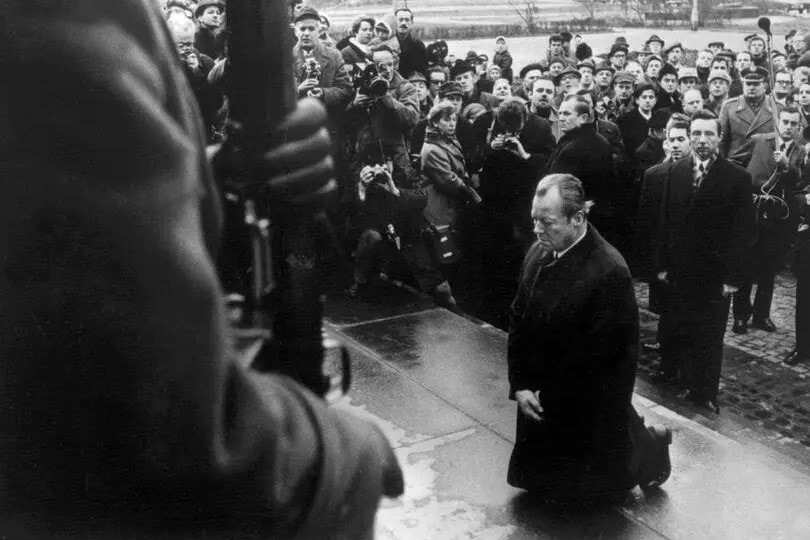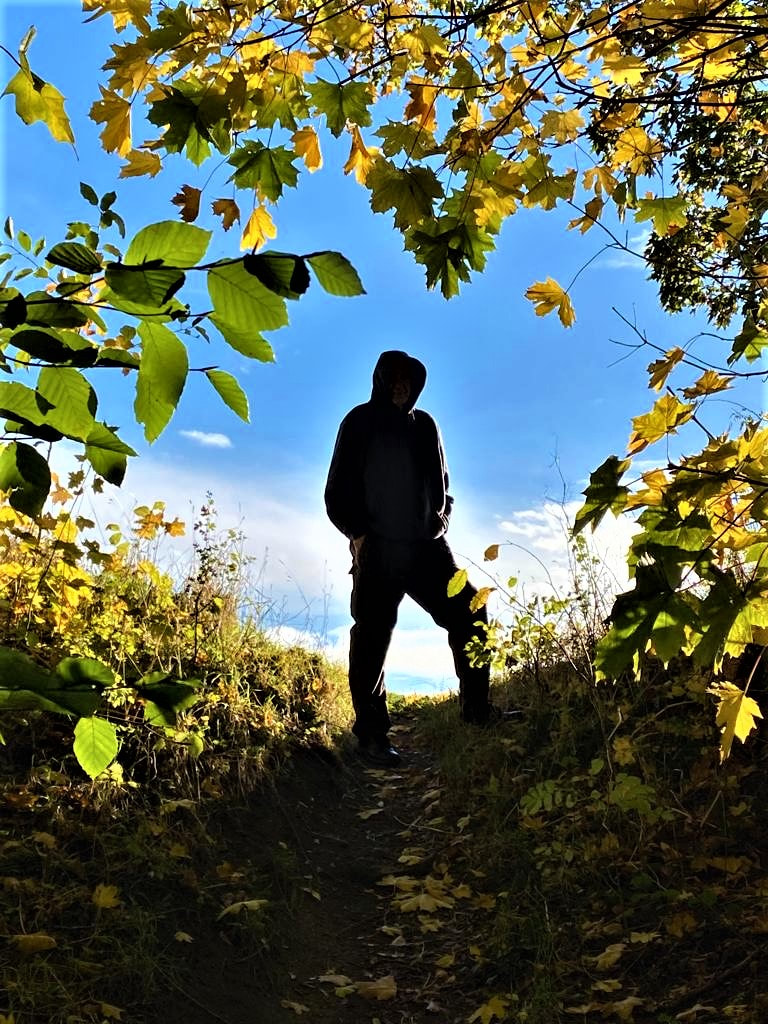|
‘Just like seasons change in nature, they change in our lives as well. And, as they change, they ask different questions of us. What questions is your life asking of you now?’ (Funmi Johnson) I had a great conversation with Funmi, a fascinating and inspiring fellow coach, this afternoon and found her question (above) very thought-provoking. I’m at an age where legacy is a persistent question that calls out to me with growing insistence…and demands a response. Am I genuinely living my life authentically according to the mission and values that I claim to be real and true? Or am I compromising too much of what matters most, deluding myself with a clever façade that even I have found convincing? How deep will my spiritual footprint be? I love Funmi’s question. It stirs the waters and ignites a search.
12 Comments
‘To the victims of violence and betrayal, in the hope of an enduring peace.’ (Willy Brandt) Angelika gave me a gift this year of a shiny German 2 Euro coin. It was minted in 2020 to commemorate 50 years since West German Chancellor Willy Brand’s legendary ‘Kniefall’. I had heard of Willy Brandt but, I must confess, not the act that has, since, gripped my imagination. The German word Kniefall means, quite literally, to fall to one’s knees. I’m especially indebted to Valentin Rauer’s exceptional social-psychological study, Symbols in Action (2009), of what took place in that extraordinary moment in world history. I’m curious about what it meant and what made it so powerful. Brandt visited Warsaw in Poland, 25 years since the end of World War 2, on a mission to seek post-war reconciliation. Poland, including its Jewish population, had suffered horrific genocidal brutality at the hands of the Nazis. At the Monument to the Heroes of the Jewish Ghetto Uprising (against their Nazi oppressors in 1943), with a crowd of media reporters watching, Brandt suddenly and unexpectedly fell to his knees. He stayed there, in silence, as those around him looked on in amazement. It was an astonishing example of an action speaking far louder than words. At a political level Brandt, as Chancellor, represented West Germany. At a personal level, during the war, Brandt had been an anti-Nazi activist. The imagery of Brandt’s Kniefall, as an act of penitent humility that acknowledges guilt and seeks ‘forgiveness for an unforgivable past’ (Rauch), resonated deeply in a prevailing Christian culture. The symbolism of ‘the innocent (who) takes up the burden of the collective’s sin, thus redeeming the nation’ (Rauer) reflected Jesus Christ’s death on the cross. Brandt was in the square from which Jews were deported to concentration camps. For me, the most striking and moving dimension of this event was Brandt’s own reflection on the spontaneity and authenticity of his act: ‘Faced with the abyss of German history and the burden of the millions who had been murdered, I did what people do when words fail us.’ It paints the picture of a human being, beyond the public trappings of a politician, who allowed himself to feel empathy and brokenness, to take undefended responsibility and to reach out in peace. It transformed the trajectory of Cold War politics then. How desperately we need leaders like that now. 'There is a universal human tendency to conceive of all things as like ourselves.' (David Hume) In the ground-breaking, futuristic film ‘Her’ (2014), actor Joaquin Phoenix played the part of a man who falls in love with an artificially intelligent (AI) virtual assistant. The AI, whose voice was played by actress Scarlett Johansson, was capable of deep learning. It, or we could say ‘she’, spoke, responded and interacted with the protagonist in ways that we could imagine of a real woman in an increasingly loving relationship – and all via a voice. The movie played with the social-psychological possibilities and limits of the potential inter-relationship between humans and technology. In the next year another movie, ‘Ex Machina’ (2015), saw Domhnall Gleeson playing the role of a computer programmer who encounters an AI robot, this time in the physical form of a beautiful woman played by Alicia Vikander. Gleeson is invited by a tech entrepreneur to test (a) whether she’s capable of genuine consciousness and (b) whether he can relate to her as ‘human’, even though he knows she is artificial. As the plot plays out, the AI skilfully seduces and manipulates the programmer, with apocalyptic implications as the AI plays out the relational game and wins. One of the striking features of both dramas is the human ability to project our human qualities onto other people or things, in this case the AIs, in ways similar to those in which we may, say, attribute human qualities to a dog – and then relate to it as if it were in some way human. It’s a subconscious phenomenon, a blurring of the boundaries between reality and fantasy. We can know something to be true at a rational-cognitive level and, yet, still feel and behave as if a different reality were true. It’s like believing what we want to believe, when it fulfils a human need to do so. ‘When you wish upon a falling star, your dreams can come true. Unless it’s a meteorite hurtling to the earth which will destroy all life. Then you’re pretty much hosed no matter what you wish for. Unless it’s death by meteor.’ (Despair.com Demotivators) I was surprised to return to my desk and find 6 people waiting in a queue to complain. I’d worked hard on my all-staff presentation and thought I’d handled it well. My task had been to present the results of an annual staff survey: the good, the bad and the ugly. I’d attempted to present a view that, even in those areas where scores were low, such scores represented implicit positive hopes and aspirations. If, for instance, someone had given a low score for quality of management, it was because good management matters to them, even if their desires and expectations were unmet. My agitated colleagues saw it differently. They felt as if I had spun the results, put a positive spin on the ugly, with a result that those staff who had already been angry, frustrated and disappointed now felt even more strongly that their voices were ignored, dismissed and unheard. Still taken aback, I tried to defend myself, arguing that it wasn’t spin but a matter of perspective. They weren’t having it, and they pushed back even harder than before. I was left reeling and confused. In my mind, I had presented the survey results with integrity. I couldn’t understand their hurt and angry responses. This was some years ago and I remember vividly, some days later, driving into work when a penny dropped suddenly. It occurred to me that, when a person describes a glass as half-empty, it’s not simply a matter of perspective but one of sentiment and emotional experience too. By presenting a glass as half-full, I had inadvertently failed to acknowledge and represent an authentic expression of how they were feeling. I returned to my colleagues and shared this somewhat embarrassingly-belated self-revelation – with which they wholeheartedly agreed. They accepted my apology with grace. ‘If you want to know what your true values are, have a look at your diary and your bank statement.’ (Selwyn Hughes) Take any example of an important-to-you decision that you have taken during this past week. Consciously or subconsciously, directly or indirectly, it will have reflected something of your underlying beliefs and values. At one level, every decision we take with awareness represents the outcome of a choice point, analogous to a choice of a direction at an intersection in a road. Guiding principles are a way of choosing to align our decisions and behaviour with our beliefs, ethics and values. I worked with a group recently where, during feedback, participants commented on how they felt impacted by what they saw and experienced as my ‘distinctive’ style and approach. They were curious and asked me what, if anything, lay behind this – that which they had experienced – for me. What is it that makes the difference? I held up a small, yellow, post-it note to the screen. On it are written 3 words in my own scrawled handwriting: Prayer, Presence, Participation. These are, if you like, the guiding principles that underpin me personally and all of my work professionally. I carry them with me and have them stuck on my desk, beside the monitor. I pause and focus on them consciously and deliberately before, say, writing a message, joining a conversation or running a workshop. They really do matter to me. Prayer is inviting and opening myself to God’s insight, wisdom and power. He is able to reveal, do and achieve things that are truly impossible for me alone. Presence is ensuring quality of attention and contact with each person or group that I will meet. It’s viewing and approaching each person, each moment, as a sacred encounter. Participation is an invitational spirit that calls for humility and courage. It means engaging with people, not simply technology or any materials that we may use. At the end of the conversation, I invited each person in the group to reflect for a moment – for as long as they needed – and to write down 3 words that, perhaps, they would choose to underpin their own practice. They did this thoughtfully, alone, then each shared with others in the group what they had written. This felt so much deeper and more meaningful than simple words on paper could capture or convey. It was about integrity, authenticity and congruence: choosing to take a stance. What core principles guide the focus and parameters of your decisions and behaviour? What stance are you willing to take? 'Management speak is the strangling of language. It is the wringing out of any meaning from once-beautiful words.' (Chris Huet) Research published this week by the UK communications firm, Enreach suggests that, in the UK, management-speak still annoys and irritates. Expressions such as: blue sky thinking; thinking outside the box; low hanging fruit; and touching base appear to provoke particular disdain. Yet what is it about these phrases that triggers such strong and cynical reactions? Duncan Ward, author of the survey, proposes two principal reasons: that jargon conveys inauthenticity by presenting: (a) a smokescreen – an attempt to hide shortcomings; or (b) a façade – an attempt to impress others. Ward also reflects that, given that many people are now not working face-to-face partly owing to the residual effects of Covid restrictions, clear communication is considered as essential. My sense is that, in an egalitarian social media era where soundbites and short-sharp messaging are the norm, people are also impatient of any language that comes across as pretentious or waffly. Against this backdrop, management jargon is disliked at work because it creates a fog factor: clouding rather than clearing. It blocks – rather than builds – relationship, meaning and trust. Viewed through a cross-cultural lens, the UK sometimes looks down on language it perceives as imported. It likes to see itself as culturally sophisticated; using simple, clean language. Management-speak is perceived as originating in the United States and with that, for some people, it carries an underlying (and, I hasten to add, unfair) judgement of superficiality. This is one possible reason why I believe Scott Adams' satirical Dilbert was so popular in the UK. We were able to smile at a phenomenon ‘over there’, whilst also to recognise its growing influence ‘over here’. Ward added that most respondents use jargon, in spite of disapproving of it. I can add my own name to that list of offenders. I worked with Peter Robson, a great leader who came from a very different background. At my first appraisal, he said, ‘When you speak in OD language, I have absolutely no idea what you’re talking about.’ He also added, in generous spirit, ‘Yet I have seen and felt the impact of what you do. It’s like magic. Whatever it is – keep doing it!’ Ward concludes simply that: ‘people would prefer to understand more clearly what their colleagues mean.’ What jargon phrases do you find yourself using? Which wind you up most – and why? ‘If you don’t stick to your values when they’re being tested, they’re not your values.’ (Jon Stewart)
We sometimes discover what our values are when someone behaves, or something happens, that cuts sharply across them. It can be like a glass filled with liquid that gets knocked. We find out what’s inside when we see what spills out. At times, we’re surprised to find that our true values are quite different to those we espouse or identify with rationally. We don’t just think values. We feel them. Gut level, heart-wrenching feeling. If you don’t feel it when challenged or experiencing a clash, it doesn’t matter enough to you. If in doubt, shake the tree, see what falls and feel it land. Impact. I was sitting in an awkward circle during a coaching workshop. It was one of those activities where a group is placed in a room with no instructions and no guidance, to see what emerges. I felt curious as a conversation gradually unfolded… until, that is, a forceful-sounding man assumed the role of leader and put down a shy-looking woman sitting opposite me. Without thinking, I leapt straight to her defence and challenged the power figure, as if the woman needed saving. The group remarked later on my response – and that’s when I became aware of Stephen Karpman’s Drama Triangle. It wasn’t a rationale that had triggered me but a behaviour that crossed a deeply-held value. That was some years ago now and, although I no longer default to rescue mode, it helps in part to explain why so much of my life and career have been dedicated to international development, advocacy and relief work. I’m a follower of Jesus, I hate that the poor are so vulnerable and I want my life to make a difference. What gets you up in the morning or keeps you awake at night? What are your true values, and how do you know? If push comes to shove, what are the lines that you will not cross? Better to be on the edge than on the fence? There are times and places where diplomacy is the best option. There are, too, roles and situations in which a degree of neutrality is essential to enable a successful outcome. Coaching, mediation, group facilitation and process consultation are good examples. To become too embedded or embroiled is to lose the value that relative independence can bring. Yet, in spite of this, the most radical change often takes place at the bleeding edge.
What does that mean? At times it’s about leadership, taking a firm stance based on our beliefs and values, no matter how unpopular that may be or make us. This sometimes involves taking a counter-stance to prevailing received-wisdom, culture and norms. We associate various graphic metaphors with this approach, e.g. cutting edge; cut-through. The bleeding can result from the reaction, the push-back, the potential personal and professional cost. To take a stance can be and feel bruising. At times it’s about being authentic, congruent and revealing our proverbial cards. ‘This is my stance on this issue. Let’s discuss how we can manage the boundary together so that it works positively for our relationship’ is very different to, ‘I don’t have a view on this’ or, ‘I don’t want to reveal my stance in case it impacts negatively on our relationship.’ The former can build trust; the latter may leave a person or a group suspicious or unsure. In my experience, this can be a sharp edge to negotiate. How do you handle disclosure and stance in your professional relationships? How close do you get to the bleeding edge? ‘Words can inspire. Words can destroy. Choose your words well.’ (Peter Economy) In English, we use an expression, ‘biting my lip’ to describe a moment when we’re yearning to say something, yet choose self-restraint. And there can be good reasons to hold back. Our words could prove hurtful or damaging…or decidedly career-limiting. Yet there are situations in which we should speak up. What if our safety filters auto-override our personal need for congruence; or the needs of a situation where our silence could be taken as tacit agreement or collusion? What if our fears of the consequences of speaking out, for instance against some grievous injustice, allow the violation to go unchecked? What if we’re simply too shy or polite to speak out for risk of transgressing our own or others’ cultural expectations? Anti-Nazi Martin Niemöller’s words can still haunt us: ‘First they came for X, and I did not speak out because I was not an X’. It’s a silence that can leave our consciences seared and others devoid of support. Yet we also know the amazing, positive, transformative power of words to spark the imagination, ignite a passion, set us brightly ablaze. Think of first-class orators, of Winston Churchill or Martin Luther King: of words that inspired such great conviction, commitment and courage. Words can reframe, reconstrue, change everything we think and believe is possible. Words can touch us deeply emotionally; instil confidence, engender hope, enable us to receive and convey love. As a follower of Jesus, I love the mystery of words: ‘In the beginning was the Word, the early word, the first word, the I am who I am word, the with-God word, the was-God word. The without-whom-nothing word, an unheard-of word behind words. World-making word. Speaking the language behind language.’ Words used playfully, creatively, evocatively, provocatively can allow us to grasp and express reality, idea, concept, abstract and experience that lay beyond words. At times, I have spoken words when I should have stayed silent and stayed silent when I should have spoken. It has felt like dancing on a knife edge; trying to weigh up pros and cons, rights and wrongs, implications and consequences, all in a split second. Sometimes, I have found myself lost for words, or I have used words clumsily or harshly without enough care for others. In seeking too hard to be more considered or diplomatic, my words have felt too weak, cautious or ineffective. At other times, however, I have seen and felt the dazzling, dynamic influence that life-giving words can have on a person’s whole world, outlook and stance; a team’s relationships; an organisation’s effectiveness; a society’s vision and hope. I have seen how words can change…everything. I try to use words with courage, humility, creativity and love. What part do words play in your life, work and relationships? If we use words well, what becomes possible? ‘I don’t believe in riches, but you should see where I live.’ (U2) My house is made of cardboard. It’s called a new-build, but the ‘build’ bit has to be taken with a very large pinch of salt. If you cough outside, the walls shake. Cold air howls through the double-glazing, conveniently blowing the dust off the curtains. Cracks decorate the walls and door frames in elegant postmodern style and the slightest of sounds travels through everything. The builders on-site blare out music daily, with a thumping bass so loud that many nightclubs would envy it. They drive heavy machinery persistently so very close to the house that everything – and I mean, everything – shudders. The room lights flash on and off like a delinquent strobe as they go past. My alarm clock travelled 18cm across the window ledge and turned to face the opposite direction. ‘It’s just the house settling; nothing to worry about.’ There are tyre tracks across my front lawn. The workers are completely and utterly impervious to feedback, as if specially trained to not-hear. Best and worst of all, there are ‘Considerate Constructors Scheme’ posters displayed (or ripped down by angry locals) all over the site. If you ask me, that’s the rich icing on the metaphorical moving-in cake. It makes a painfully ironic joke out of corporate core values. As I heard one brand expert say, ‘If you don’t live out your values, they’re not worth a flying f***’. I might have said, ‘…the paper they’re written on’, but hey – she might have had a rough time with builders too. Here’s the thing: Values matter. They’re about truth, integrity and trust. Bottom line: Make it real. Actions speak louder than intentions or words. Do you need help with discovering, creating or living your core values? Get in touch! |
Nick WrightI'm a psychological coach, trainer and OD consultant. Curious to discover how can I help you? Get in touch! Like what you read? Simply enter your email address below to receive regular blog updates!
|













 RSS Feed
RSS Feed